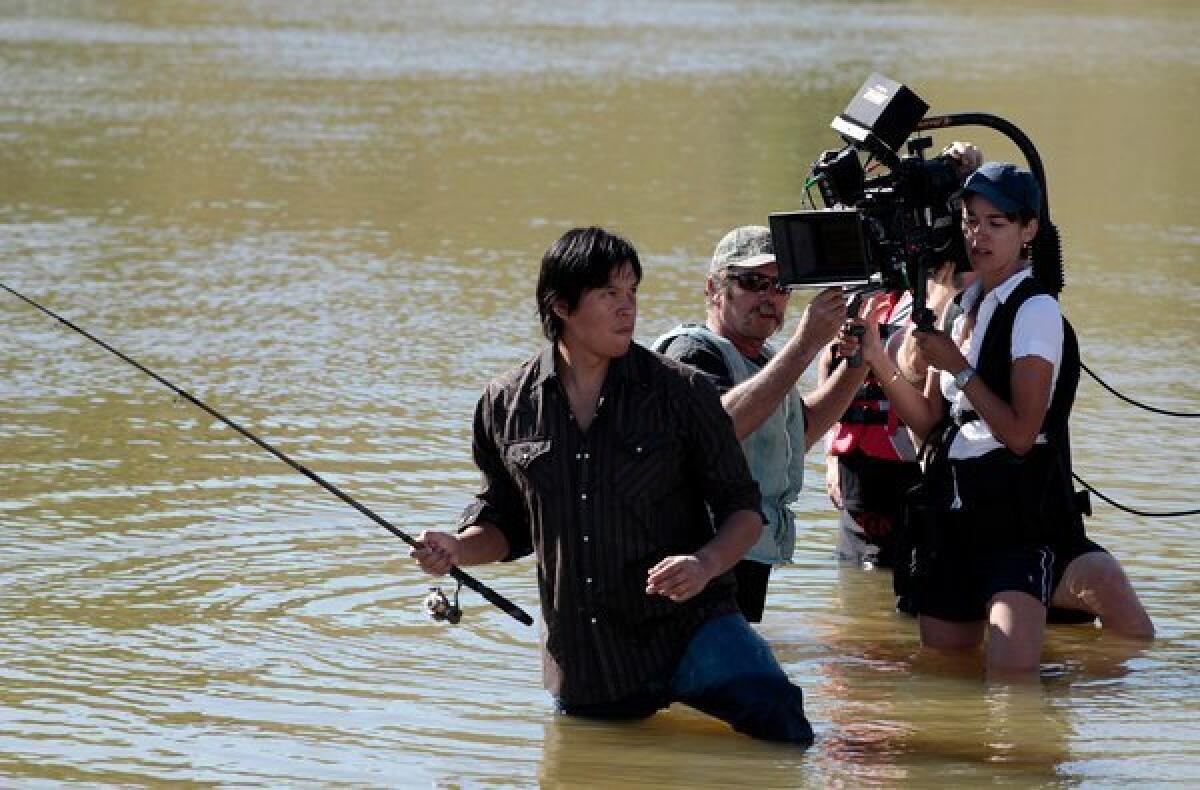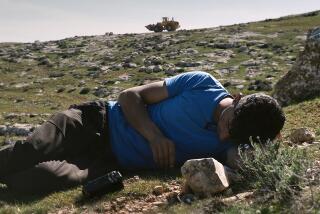L.A. Film Fest: ‘Winter in the Blood’ depicts life on reservation

- Share via
Filmmakers Alex and Andrew Smith were thrilled but stressed Thursday afternoon as the debut of their passion project, “Winter in the Blood,” about life on an Indian reservation, rapidly approached.
The Montana natives were close family friends with James Welch, the author of the novel on which the book was based, and sought to bring Welch’s words to life in the best way they knew how.
After filming on the Montana Hi-Line on a budget that they raised themselves by all manner of grass-roots fundraising -- from readings and concerts to T-shirt sales and a Kickstarter campaign -- the product of their toils, a tribute to Welch’s work, came to life.
“He [Welch] gave a unique perspective. No one had seen the first-hand dispatches from the front,” Andrew Smith said. “We wanted to try and capture that.”
CHEAT SHEET: Los Angeles Film Festival 2013
The Smiths’ first film, the Sundance hit “The Slaughter Rule,” starring Ryan Gosling, was also shot on the Hi-Line, the northern part of Montana that is adjacent to U.S. Highway 2. Their mother, writer Annick Smith, co-edited (with William Kittredge) the renowned anthology of Montana writing “The Last Best Place.”
Though filming in Canada promised greater financial incentives, the Smiths were drawn to Montana, the novel’s setting.
“Montana just called us back,” Andrew said.
The film, based on the novel by Welch, tells the story of a nameless young Native American man who struggles with his heritage and his life. In the film, this character, Virgil, feels “as distant from myself as a hawk from the moon,” “Winter” is a story where not a lot happens but everything is revealed.
Welch, who died of a heart attack at age 62 in 2003, was a product of the Hi-Line. He was born in Browning of a Blackfeet father and a Gros Ventre mother and raised on the Ft. Belknap Reservation. He put everything he knew about the area and about modern Native American life into “Winter in the Blood,” a landmark debut novel published in 1974.
The book has been translated into eight languages and remains in print. Native American writer and filmmaker and associate producer of the film, Sherman Alexie, said it was a foundation stone of the literary Native American renaissance and has inspired countless writers, himself included.
“He was the first one to really write about how Native Americans really live their life on a reservation,” Alexie said. “He’s our greatest writer, our Hemingway, so I hope this [film] brings attention to his work.”
Though not of Native American descent, the Smiths sought to present an organic depiction of life on an Indian reservation, as Welch does in his novel.
PHOTOS: Hollywood backlot moments
“We have these connections and I feel humbled to be able to use them to go into this area and bring out the richness that has really never been used for film before,” Andrew Smith said.
Because aspects of the novel were foreign to the brothers, the Smiths utilized the experience and understanding of Native American cast and crew members to accurately portray Welch’s vision.
“We really used them to guide us,” Alex Smith said. “There were places where we couldn’t quite get under the skin of these characters and they helped us understand what these characters were going through.”
Chaske Spencer, noted for his performance as Sam Uley in the Twilight saga, stars as Virgil in “Winter in the Blood.” Having grown up in Montana and Idaho on reservations much like the one portrayed in the film, he felt a sense of familiarity filming in Montana.
Spencer said he was attracted to his character, an alcoholic struggling with his wife leaving him, because of his depth. Not often, Spencer noted, do Native American characters go beyond stereotypes.
“No one has ever looked at us as human in Hollywood. We’re savages, or mystic warriors, we’re never portrayed as human,” Spencer said.
Alex Smith said the under-representation of Native Americans in the film industry was part of the reason he was eager to tell Welch’s story and to shoot in Montana where the book is set.
“There aren’t many films about Native American life, but it’s an extremely rich part of American culture,” Alex said. “It’s a true life that a lot of people in America live and that a lot of people in America don’t know about.”
The Los Angeles Film Festival will screen “Winter in the Blood” at 7:30 p.m. Friday, 7 p.m. Wednesday and 1:10 p.m. June 22.
ALSO:
L.A. Film Festival opens with Pedro Almodovar’s ‘I’m So Excited’
Los Angeles Film Fest: Uurors announced for award competitions
Eclectic mix of movies takes off at Los Angeles Film Festival 2013
Twitter: @dfergasaurus
More to Read
Only good movies
Get the Indie Focus newsletter, Mark Olsen's weekly guide to the world of cinema.
You may occasionally receive promotional content from the Los Angeles Times.










